The blossoming world of children’s publishing in India!
In recent years, India has witnessed a remarkable surge in the realm of children’s publishing, igniting imaginations and fostering a love for literature among its young readers. From captivating narratives to vibrant illustrations, the landscape of children’s literature is undergoing a transformation, offering an array of diverse voices and narratives that resonate with the youthful audience. Here, Varsha Verma finds out more about the trends in children’s publishing.

Maple Press is India’s leading independent family-run children’s book publisher and aims to inspire, inform, and excite the children of all ages by publishing high quality children’s literature in affordable print, electronic and audio book formats. The current catalogue has over 1200+ titles
This is a glorious phase for our children’s book industry in the way we are seeing it question the status-quo, experiment, grow, collaborate (publisher-publisher/ creator-publisher / social bodies- publisher) and finally arrive on the scene as an unafraid category. There is growing recognition in the media and on the award platforms of children’s literature.
Here, Pragya Mittal, Business Development Director, Maple Press; Reetanshu Singhal, XACT Books; and Richa Jha, Founder and publisher, Pickle Yolk Books share their views on the trends in children’s publishing.
Trends in children’s publishing…
“Over the past five years, the landscape of the children’s book industry has undergone significant transformations. One pivotal shift has been the substantial increase in Amazon’s market share, proving advantageous for both readers and publishers.For readers, this shift has ushered in a new era of transparency in terms of price discovery and accessibility. The vast majority of books, including backlist titles, are now accessible across a multitude of pin codes in the country. This has empowered readers with unprecedented convenience.Simultaneously, for publishers, there has been a remarkable reduction in dependency on traditional retailers and distributors. This shift has particularly benefited smaller publishers, previously hindered by a lack of distribution prowess. Now, some of these smaller publishers, who were producing high-quality content, can efficiently reach a broader audience,” shares Pragya.

XACT BOOKS is a children’s books licensor, packager, publisher & rights editorial that is in working from 26 years.A second generation business, Xact books now has 60000+ children’s book titles of its own of all kinds. Xact is one of the first exporters of children’s books from India.
Similar views were shared by Reetanshu who feels that emergence of online platforms for selling printed books, is the significant change in the industry.
While, Richa shares, “The many meaningful conversations around diversity and inclusiveness in the last few years has brought about a decidedly enriching shift in the way publishers are now looking at children’s publishing; a welcome shift which is here to stay. In the immediate next few, I’m hoping to see a growth in well-done, sensitive and intelligent Dalit and LGBTQ+ literature for children. Green literature is now an established genre in the industry. I am excited about the way the picture book market is gradually growing in India. I am most thrilled to find orders coming to us from tier2/3 towns these days. The readers are now open to accepting picture books that are priced slightly higher than they used to be, and narratives that are more nuanced, so that allows publishers like us more room for experimentation with form and content. Many new small independent publishers are coming in with some brilliant books on offer. The huge gap that we had in the 0-4 segment was that of good quality board books. I’m happy to see some fabulous ones getting published now in India.”
“One very significant development is the way books being done in English are finding readers across other regional markets in India through language rights sales. I hope to see more and more books in our mother tongues getting translated into English too. Thanks to how the World Wide Web has brought the world closer, more of our authors and illustrators are in touch with creators from other countries/ markets and bolstering their creative processes and sharing theirs with the rest of the world,” adds Richa.
“Another noteworthy change is the increasing significance of customer reviews. This shift has played a crucial role in elevating the overall quality of available books, as subpar books gets filtered out through reader feedback,” shares Pragya.
On ebooks…

Pickle Yolk Books is a multi-award-winning Indian publisher of picture books in English in operation since 2015. Their titles are important conversation-starters as they encourage curiosity, independent thinking and a questioning spirit among the young readers
On asking about the impact of ebooks on children’s publishing, Reetanshu shares, “For 0-7 year olds , there is no impact. I believe that a sense of touch is always required for early learning and printed books presented in different novelties is still a big plus and dominates the market. But, for 7+, the market has been changing and publishers and editorials have to create content that can find its way in both markets i.e. of printed books & digital books.”
To which, Pragya adds, “E-books have introduced an additional revenue stream to our business, enabling the global distribution of our content with just a click of a button. However, their contribution to our total income remains modest, typically constituting less than 1% for most publishers.Digital platforms like Instagram and Facebook have facilitated a direct connection with customers, presenting us with opportunities to broaden our reach. YouTube, in particular, has emerged as a significant player in the children’s space, with channels such as ChuchuTV and Cocomelon amassing hundreds of millions of followers. These videos are proving to be more captivating for children than traditional print content, thereby impacting the demand for books.”
“The more the merrier couldn’t be truer than in the Children’s books segment. I believe that all the mediums complement one another rather than competing. Printed books are not going anywhere and Pickle Yolk Books continues to publish the way we always have been – doing just a couple of high quality picture books a year, but books that are the most wholesome versions of themselves as they could be, every which way. While we don’t do them on our own, we are thrilled to see our titles in their e/audio forms being licensed and adapted by a multitude of platforms in India and internationally,” shares Richa.
Preference of young readers…
“There hasn’t been a significant change in the preferences of young readers, except for a notable trend where parents increasingly desire their children to gain early exposure to their religion, culture, and deities. The present government has actively emphasized the promotion of Indian content over Western ideals that have been prevalent in our schools for the past 50 years,” shares Pragya.
While, Reetanshu shares, “Young readers are becoming more aware to the world and this makes them more curious to gain as much knowledge as they can. However, with emergence of digital means , I believe a sense of discipline is diminishing and also they get exposed to anything and everything in the world now and if parents don’t curate this , then, it can be detrimental for kids.”
Richa has another point to share, “It’s heartening to see parents now being more receptive to books that aren’t necessarily all sugar and honey. One of our surest moving titles during and post Covid is Boo! When My Sister Died. The book is every bit as hard-hitting as its title suggests, and parents are picking books like this for their children. A small but growing number of parents in the larger metros are also willing to buy picture books that are above the Rs 500 price point. It signals their willingness to trust the role that picture books can play in the lives of their young ones. These are tiny, but not insignificant signs of the gradual maturing of the reader, be it the parent or their child they are reading the book out to.”
Role of technology…
“It has enabled our multiple collaborations with some stellar illustrators from different parts of the world, and we are absolutely loving the joy that it brings us! A proliferation of e-commerce platforms (as mentioned above) is a welcome development, of course. I also appreciate the process of procuring the ISBNs having moved fully online. Readily excellent quality POD is now accessible to us, but it continues to elude the cost-effectiveness that I hope it someday ends up offering for picture books,” shares Richa.
“As each day unfolds, technology is becoming increasingly indispensable for our publishing house. Processes such as book design, layout, and illustrations have undergone a complete digital transformation, heavily relying on software firms like Adobe and Microsoft to the extent of necessity. Communication within the organization has become more efficient with the integration of apps like Gmail and Whatsapp. Logistics have been streamlined with the assistance of companies like Shiprocket and Delhivery. And ofcourse, e-commerce platforms such as Amazon and Flipkart have enabled our books to reach a global audience with just a click of a button,” shares Pragya.
While, Reetanshu shares, “The model of selling is changing and publishers and rights editorials have to be open to digitisation of their contents and take measures accordingly. I think it’s an opportunity as it opens more markets and ways to distribute your books and content. Just be open-minded.”
Challenges…not many…
“We are a relatively young company with a small and agile team, and our founders are in their 20s. Consequently, adapting to the aforementioned changes hasn’t posed a significant challenge for us. However, a notable hurdle has emerged in the form of intense discounting and substantial advertising expenditures by certain publishers on e-commerce platforms, practices that we find unsustainable. As a financially prudent company, we are reluctant to sell books at a loss or take on debt to gain market share,” shares Pragya.
Reetanshu also says, “As a licensor and rights editorial, not much of challenges have been faced. Infact, if I talk about digitisation, it has breaded more opportunities to market and offer the content.Nowadays buyers could have interest in using your content to publish in their market in different ways. You just have to be wise and do some groundwork before negotiating an offer.”
But, Richa says, “Our biggest nightmare is the mounting paper cost. In a span of three years, I have seen the paper prices go up exponentially. Add to that the shrinking availability of quality special paper that we would have loved to use more of in our titles. But given the shifting dynamics there, we are finding ourselves getting more and more restricted to using just the regular Art Matte paper. Publishing handsome hard covers also get more expensive in an extremely price-sensitive market.”
Diversity and inclusivity in children’s literature…
“More inclusion means more readers and diversity helps you get an access to so many cultures and the different reader’s feedbacks also helps you to better your content & books. So, it is a welcome move,” says Reetanshu.
While, Pragya adds, “We have consistently maintained a culture of diversity and inclusivity within our company, actively promoting women into leadership roles. As awareness around Diversity, Equity, and Inclusion (DEI) continues to rise, readers are increasingly demanding content that aligns with these values. This has compelled publishers to be more mindful of their content, and we are taking additional measures to ensure our content is sensitive to diversity and inclusivity.”
To which Richa adds, “We were doing it even before these became the buzzword in the industry, but it is heartening to see our publishing world championing it with full gusto. Our clear focus now is on creating picture books that take the readers deep inside the internal workings of the characters’ minds.”

Future trends in children’s book publishing…
“The most significant trends we observe include a sustained rise in Amazon’s market share within the industry and a notable increase in government spending on primary education. We anticipate that this increased investment in education will potentially stimulate demand for high-quality children’s books. India’s children’s book industry is still in its early stages and is poised to maintain double-digit growth over the next decade,” says Pragya.
While, Reetanshu shares, “If I talk about printed books publishing: I still see the market of 0-6 year old being not so much hampered. Little kids need a sense of touch to learn better. Although, a digital screen can do the job, but not so much.For the age groups above 6, publishers need to be digitally creative and use digitisation to complement their current ways of publishing.”
“Books with darker (and yes, more socially real) themes will be acceptable. A proliferation of green literature, and a coming of age of books around Dalit and LGBTQ+ themes will also be highlighted, bringing in more authentic and #ownvoices in our books. Graphic novels will get sharper, more thought-provoking, and more marvellous. Age-agnostic picture books that can find resonance across a wide age group of readers, including among adults, will also be popular,” concludes Richa optimistically.

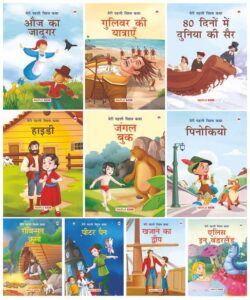
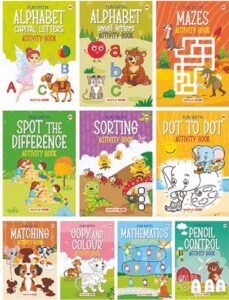
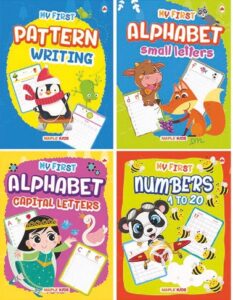
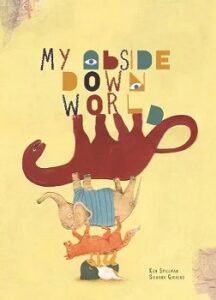
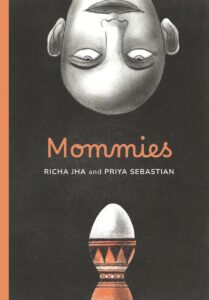
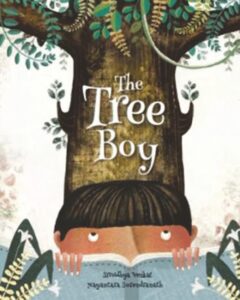
Comments are closed.